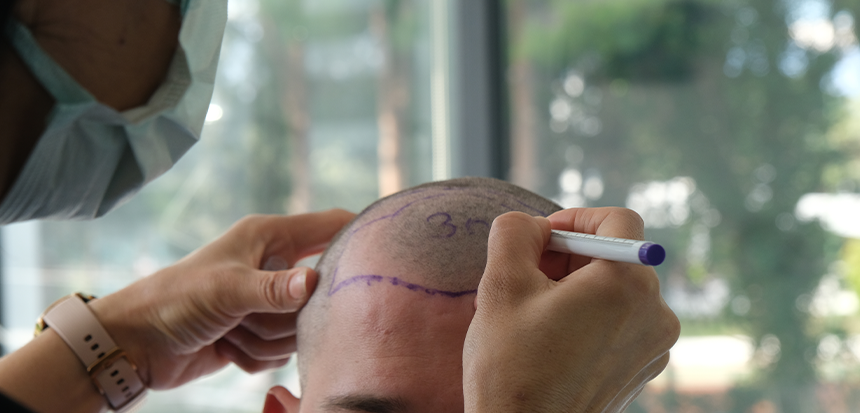
DHI hair transplant is an effective and popular surgical method used against baldness and hair loss.
DHI hair transplant, characterized especially by its minimally invasive nature, requires the extraction of individual hair follicles from the donor area without requiring any incision or stitches and immediately implanting them into the designated area. This innovative approach offers numerous advantages over traditional hair restoration techniques.
Candidates for this procedure, which can be applied to both genders struggling with hair thinning or loss, are generally individuals who have sufficient hair in the donor area, usually located at the back or sides of the scalp and deemed suitable for transplantation. These individuals need to have realistic expectations and a thorough understanding of the potential outcomes of this procedure.
DHI hair transplantation offers numerous advantages over alternative hair restoration methods. The most important of these is the meticulous and orderly positioning of hair follicles using an implanter pen, guaranteeing an authentic and undamaged hairline. In addition, the DHI technique increases follicle density, resulting in a more comprehensive and aesthetically pleasing outcome. Moreover, characterized by its relatively painless nature, this procedure requires only local anesthesia.
The implanter pen plays a significant role in the precise and controlled implantation of hair follicles as an integral part of DHI follicular transplantation surgeries. Below are some features and advantages of this special tool:
The DHI hair transplantation procedure begins with the extraction of individual hair follicles from the donor area facilitated by a special extraction device. This device ensures the preservation of follicles and minimizes damage to neighbouring tissues.
Subsequently, the harvested hair follicles undergo meticulous sorting and are prepared for implantation by being placed in a solution that maintains their vitality until the time for transplantation. Utilizing the implanter pen, the hair roots are directly subjected to implantation in the recipient area. This special tool ensures precise control over the implantation's depth, direction, and angle, resulting in a naturally prepared hairline.
Patients receive detailed post-operative instructions, including potentially prescribed medications, avoiding strenuous activities, and protecting the transplanted area from direct sunlight. Lasting approximately 6 to 8 hours, DHI hair transplantation allows for the implantation of approximately 4000-5000 grafts in a single session.
The recovery process after DHI hair transplantation progresses quickly and simply. Typically, within a few days following the procedure, most patients can resume their normal activities smoothly. Key aspects of the recovery stage include:
Swelling and Redness
Mild swelling and a reddish colour in the recipient area immediately after surgery are normal and dissipate shortly thereafter.
Shock Loss Phase
In the first few weeks following the procedure, a shock loss phase may be observed in the transplanted hair follicles. This is consistent with the natural hair growth cycle and heralds the emergence of fresh hair from the transplanted follicles after a few months.
Emergence of New Hair
Newly transplanted hair begins to grow gradually following the standard hair growth cycle. As the transplanted hair thickens and densifies, it may take several months for full results to become apparent.
Post-operative Follow-up Checks
Scheduled follow-up appointments with the surgeon are mandatory. These sessions measure the progress of hair growth and provide necessary guidance or adjustments as deemed necessary.
In summary, individuals considering DHI hair transplantation should undergo comprehensive consultations with experienced surgeons. A thorough understanding of pre-operative and post-operative directives is essential. With careful care and attentive follow-up, individuals opting for this procedure are poised to achieve results characterized by natural aesthetics, lasting longevity, and a renewed sense of confidence with a bountiful head of hair.
The expert team and trained staff at EMPCLINICS offer clients a different perspective on treatment. For information on Turkey hair transplant prices, detailed information on the procedure from A to Z, and to make an appointment, you can reach out using the contact information provided.
Minimal scars may be present in the operation area after DHI Hair Transplantation. However, these scars can usually be covered by hair and tend to fade over time.
Hair care should be done following expert recommendations post-operation. Generally, washing the hair should be avoided for the first few days, and actions should be taken in line with your doctor's advice.
Yes, DHI Hair Transplantation is a permanent solution. Transplanted hair typically grows permanently, yielding lasting results.